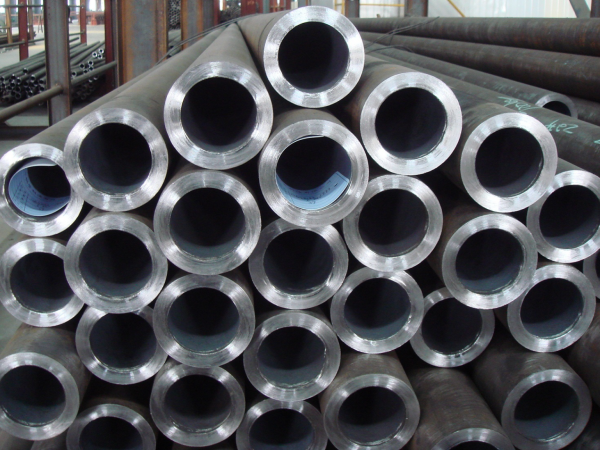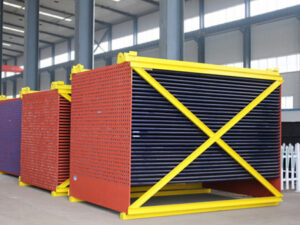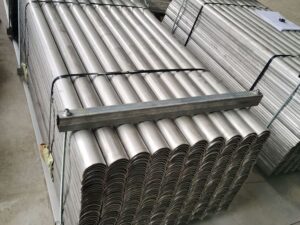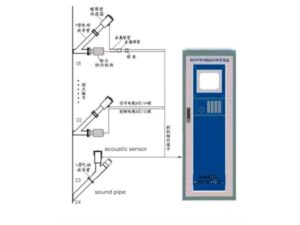High pressure boiler tube
Product Details
The major way to improve power generation efficiency is to increase steam pressure and temperature in thermal power plant. Below is a table for relation between steam parameter, efficiency and coal consumption.
| Power generation unit | Steam pressure (MPa) | Steam temperature (°C) | Boiler efficiency (%) | Coal consumption (g/kW*h) |
| Medium pressure | 3.5 | 435 | 27 | 460 |
| High pressure | 9.0 | 510 | 33 | 390 |
| Ultra-high pressure | 13.0 | 535/535 | 35 | 360 |
| Subcritical | 17.0 | 540/540 | 38 | 324 |
| Supercritical | 25.0 | 567/567 | 41 | 300 |
| Ultra-supercritical | 30.0 | 600/600/600 | 48 | 256 |
From above table, we can see along with the rise of steam pressure and temperature, power generation efficiency is increasing significantly, while coal consumption is decreasing significantly. The technical challenge in improving steam parameter is pressure & temperature resistance of boiler tubes. Pressure parts like waterwall, superheater, reheater, steam header and pipeline, that work in harsh condition, are our major concern to choose suitable boiler tube.
Waterwall tubes
Waterwall tube needs to have certain strength under room temperature and high temperature, good resistance to fatigue, flue gas corrosion and abrasion. It should also have good processing property, especially weldability.
Typically, membrane waterwall is used in supercritical (SC) and ultra-supercritical (USC) boilers. Due to the size and structure of waterwall panel, post-weld heat treatment is impossible inside furnace. Therefore, the weldability of selected waterwall tube is crucial. Additionally, medium inside waterwall tube is steam & water mixture in two phase, and outer wall of tubes is exposed in area where coal particles have the highest velocity inside combustion furnace. Issues related to fouling-induced temperature rise on tube wall and particle erosion during combustion must be considered when selecting material for waterwall tube.
Superheater & reheater tubes
Superheater and reheater of high pressure boilers operate under the most severe conditions. The tubes must meet the requirements of both creep strength and endurance strength while providing resistance to flue gas corrosion and fly ash erosion to outer wall of tubes, and resistance to steam oxidation to inner wall, also good processing property and weldability.
In cases of boiler fired by low sulfur coal, from the view of creep strength, T91 tubes is suitable for superheater and reheater in SC and USC boilers, when tube wall temperature is ≤600°C. When tube wall temperature is ≤620°C, T92, T122, and E911 tubes can be used. When the wall temperature is ≤650°C, NF12 and SAVE12 tubes can be used.
In cases of boiler fired by high sulfur coal, when tube wall temperature is ≥600°C (steam temperature ≥566°C), austenitic heat-resistant steel such as TP304H, TP321H, TP316H, and TP347H should be selected for superheater and reheater tubes.
Steam header and pipeline tubes
Since steam header and pipeline are not exposed to flue gas, their wall temperature is close to steam temperature. This requires that the steel used should have sufficient creep strength, endurance strength, fatigue resistance, steam oxidation resistance, as well as good processing property and weldability.
Due to low thermal expansion coefficient and high thermal conductivity of ferritic heat-resistant steels, they will not cause severe fatigue damage to header and pipeline under high start-up and shutdown rates. Therefore, ferritic heat-resistant tubes are preferred materials.
For steam header and pipeline of SC and USC boilers, P91 tubes can be chosen when tube wall temperature is ≤600°C. When temperature is ≤620°C, P92, P122, and E911 tubes can be used. When temperature is ≤650°C, NF12 and SAVE12 tubes can be selected.
20G tube
Boiler tube 20G (national standard GB5310, equivalent to DIN ST45.8, JIS STB42, ASME SA106B) is the most widely used steel, whose chemical composition and mechanical properties are basically the same as 20#. 20G tube has quite strength under medium & high temperature. Low carbon content gives it good plasticity and toughness. Its hot & cold forming, and welding performance is good.
20G boiler tube is mainly used to fabricate high pressure, SC and USC boiler parts like superheater, reheater, economizer and water wall, etc. Because graphitization will occur to carbon steel after long-term operation under a temperature above 450°C, temperature limit of 20G tube is better to be lower than that. Within that range, 20G tube can meet material requirement for superheater and pipeline, and featured with good oxidation resistance, plasticity, toughness and weldability.
ASME SA106C tube
SA106C is seamless carbon steel tube used for high temperature applications. Its chemical composition is similar with 20G, but C and Mn content is higher, so yield strength is about 12% higher, while plasticity and toughness is acceptable. It could reduce about 10% tube wall thickness when is used to fabricate steam header instead of 20G. This could save some material cost, reduce welding work and alleviate stress of steam header in boiler startup.
ASME SA209 tube
SA209 grade T1a (called 20MoG in China) is alloy steel seamless boiler tube. As it contains Mo element, its heat resistant performance is better than carbon steel. It tends to occur graphitization under high temperature in long-term operation. SA-209 grade T1a could be used to fabricate waterwall, superheater and reheater, tube wall temperature should not exceed 510°C.
ASME SA210C tube
SA210C (called 25MnG in China) is pearlite heat resistant steel, which could be used as small diameter boiler tube. Its chemical composition is similar with 20G, except C and Mn content is higher. So its yield strength is about 20% higher than 20G, while plasticity and toughness is quite close to 20G. It could thin tube wall thickness, reduce material consumption and improve heat transfer when used to replace 20G. SA210C tube is mainly used to fabricate waterwall, economizer, superheater which works under temperature lower than 500°C.
15CrMoG tube
15CrMoG boiler tube has good heat resistance under 500~550°C. Graphitization will not occur within this range in long-term operation. When temperature exceeds this limit, its heat resistance will decline significantly. 15CrMoG is mainly used to fabricate superheater, steam header and pipeline, etc.
ASME SA213 T22 & SA335 P22, 12Cr2MoG tube
SA213 T22 and SA335 P22 tube is equivalent to Chinese grade 12Cr2MoG. It has relatively higher heat resistance among Cr-Mo series steel. T22 (P22) tube has even higher endurance strength and allowable stress than 9Cr-1Mo under the same temperature. So it is widely used in thermal power plants, nuclear plants and pressure vessel in foreign countries. But it is not as economical as 12Cr1MoVG, so it doesn’t get widely used in thermal power plants built in China. T22 (P22) tube is not sensitive to heat treatment, and featured with good plasticity and weldability. T22 tube of small diameter is mainly used for superheater and reheater whose tube wall temperature is ≤580°C, while P22 tube of large diameter is mainly used for steam header and pipeline, whose tube wall temperature is ≤565°C.
12Cr1MoVG tube
12Cr1MoVG tube is widely used to fabricate superheater, steam header and pipeline for high pressure, ultra-high pressure, subcritical boiler in China. It is low carbon, low alloy pearlite heat resistant steel. Its total alloy content is less than 2%, only half of 2.25Cr-1Mo, but endurance strength is 40% higher after 100,000 hours operation under 580°C.
ASME SA213 T91 & SA335 P91 tube
T91 (P91) is ferrite heat resistant alloy steel tube, which is developed on the base of T9 (9Cr-1Mo) with addition of 0.030-0.070% N, 0.18-0.25% V, 0.06-0.10% Nb. 9% Cr content makes its oxidization resistance, corrosion resistance, high temperature strength and non-graphitization tendency better than low alloy steel. 1% Mo content is to improve high temperature strength and restrain hot shortness of Cr steel. Compared with T9 tube, it has better weldability and thermal fatigue performance, 3 times of endurance strength under 600°C, and keeps its excellent resistance to high temperature resistance. Compared with austenitic stainless steel TP304, it has small expansion coefficient, good thermal conductivity and endurance strength. Its mainly used for superheater and reheater operating under 650°C.
ASME SA213 T92 tube
Same as T91, T92 tube has better expansion coefficient, thermal conductivity, excellent endurance strength, high allowable stress, nice toughness and weldability. Its endurance strength and allowable stress is 1.6 times of T91 tube, while weldability and resistance to steam oxidization is nearly the same with T91.
T92 tube could partially replace TP304H and TP347H to fabricate for subcritical, supercritical, ultra-supercritical boiler pressure parts like superheater, reheater whose tube wall temperature is less than 650°C.
Physical properties
| Standard | Grade | Tensile strength (MPa) | Yield strength (MPa) | Elongation (%) | Hardness |
| GB5310 | 20G | 410~550 | ≥245 | ≥24 | -- |
| 20MnG | ≥415 | ≥240 | ≥20 | -- | |
| 25MnG | ≥485 | ≥275 | ≥24 | -- | |
| 15CrMoG | 440~640 | ≥235 | ≥22 | -- | |
| 12Cr2MoG | 450~600 | ≥280 | ≥20 | -- | |
| 12Cr1MoVG | 470~640 | ≥255 | ≥21 | -- | |
| 12Cr2MoWVTiB | 540~735 | ≥345 | ≥18 | -- | |
| 10Cr9Mo1VNb | ≥585 | ≥415 | ≥20 | -- | |
| ASME SA210 | SA210A-1 | ≥415 | ≥255 | ≥30 | ≤143HB |
| SA210C | ≥485 | ≥275 | ≥30 | ≤179HB | |
| ASME SA213 | SA213 T11 | ≥415 | ≥205 | ≥30 | ≤163HB |
| SA213 T12 | ≥415 | ≥220 | ≥30 | ≤163HB | |
| SA213 T22 | ≥415 | ≥205 | ≥30 | ≤163HB | |
| SA213 T23 | ≥510 | ≥400 | ≥20 | ≤220HB | |
| SA213 T91 | ≥585 | ≥415 | ≥20 | ≤250HB | |
| SA213 T92 | ≥620 | ≥440 | ≥20 | ≤250HB |







